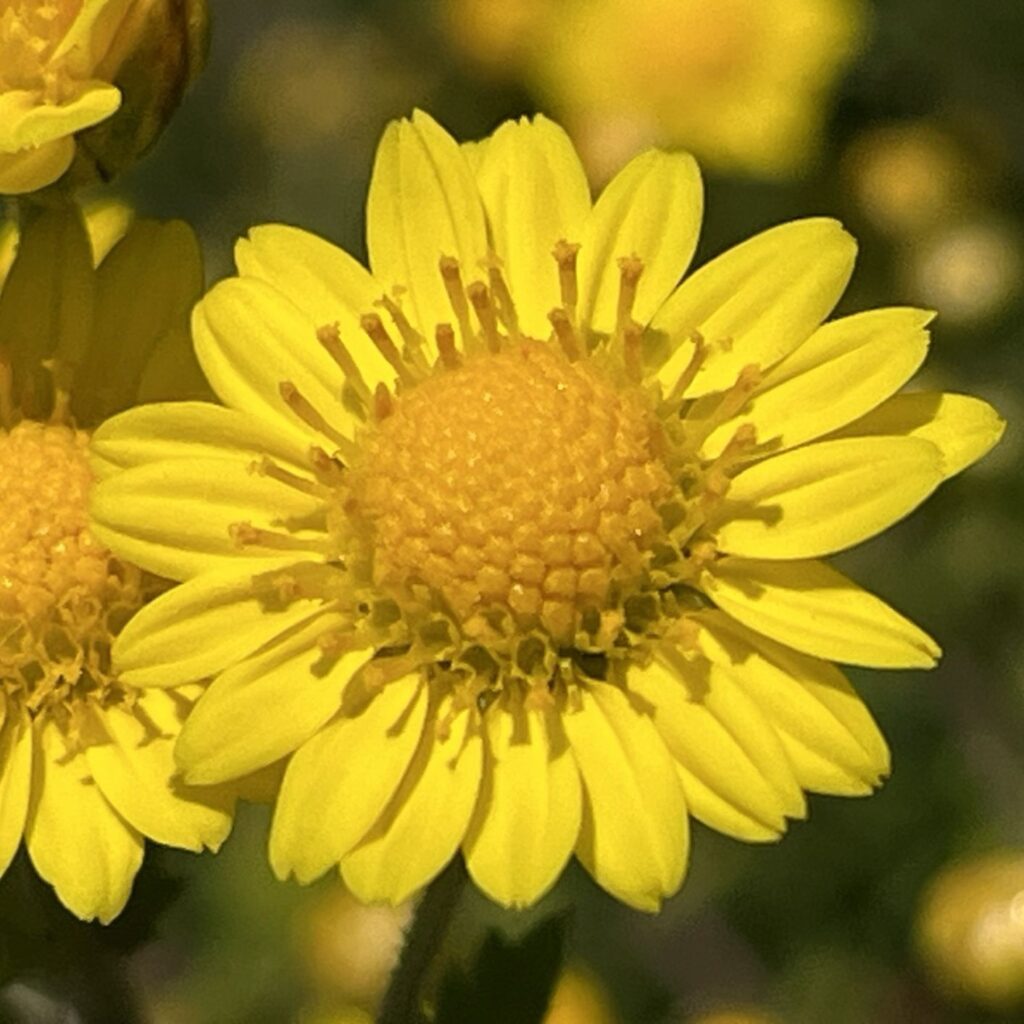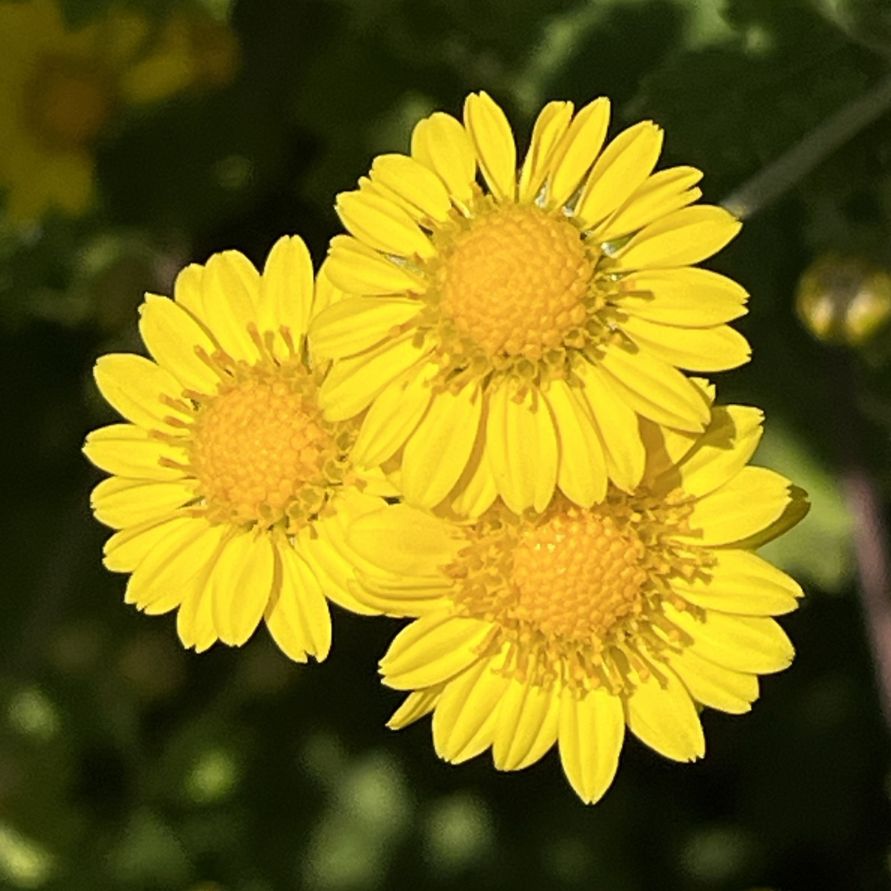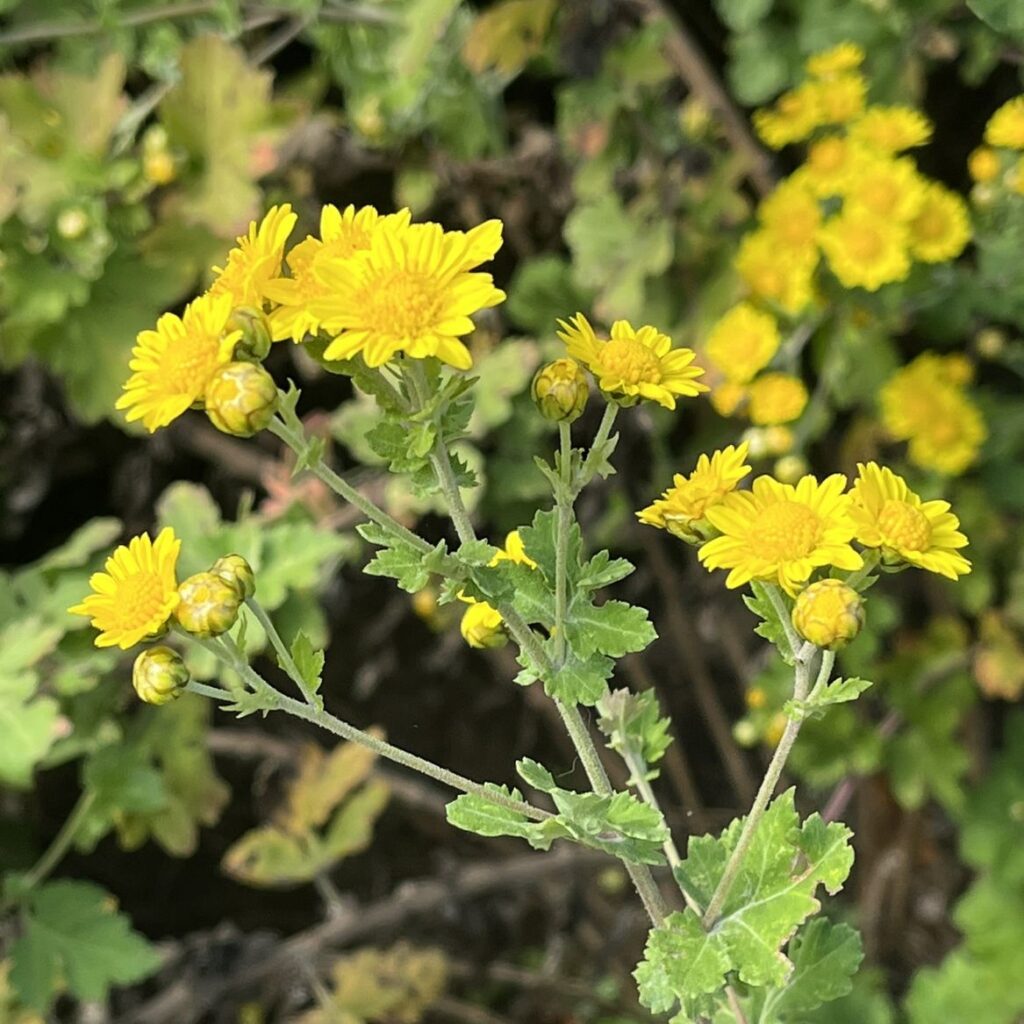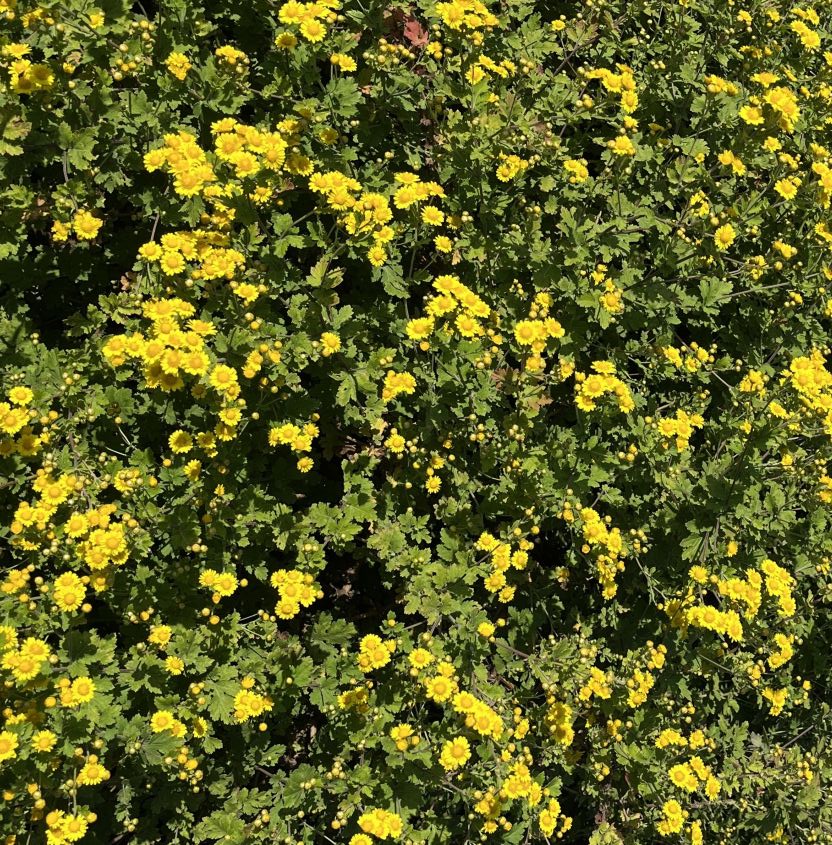シマカンギクは海岸近くで陽当たりのよい崖地などに自生。咲く花が少なくなる晩秋から初冬にかけて、鮮やかな黄金色の花々を咲かせます。
Indian Chrysanthemum grows naturally on sunny cliffs near the coast. From late autumn to early winter, when the number of flowers in bloom decreases, it produces vibrant golden flowers.
【仮名】シマカンギク, ハマカンギク, アブラギク
【和名】島寒菊, 浜寒菊, 油菊
【英名】Indian Chrysanthemum
【学名】Chrysanthemum indicum
【誕生】12/ 14
【開花】10, 11, 12月
【花色】Yellow
シマカンギク
シマカンギクの概要

シマカンギクはキク科キク属の多年草。日本では本州の近畿地方以西、四国、九州、沖縄、国外では朝鮮半島、中国、台湾に分布しています。おもに海岸近くで、陽当たりのよい崖地、岩場などに自生。咲く花が少なくなる晩秋から初冬にかけて、鮮やかな黄金色の花々を咲かせます。
シマカンギクの名前

シマカンギクの名前の由来は「島」を思わせる海岸近くで自生し、「寒」い時期に花を咲かせる「菊」だから。ラテン語の属名クリサンテムムは「金色の花」という意味です。種小名インディクムは「インドの」という意味。これはかつてインドが東洋全体を指す呼称だったからです。
シマカンギクの姿形

シマカンギクは、地下茎から繊維状の細根を伸ばして岩や土をつかみ、地上茎を伸ばして上方で分枝。葉は互生の卵状楕円形で、羽状に深く裂け、縁に不規則な鋸歯があります。花は茎先に頭花を咲かせ、花冠の真ん中に管状の両性花、周りに舌状の雌性花。紡錘形の痩果を結びます。
シマカンギクの別名

シマカンギクは「油菊」という別名があり、おもに2つの由来があります。1つは外観によるもので、葉に精油を含む腺毛が密生し、光沢を帯びて見えるから。もう1つは昔の薬用によるもので、江戸時代、花や全草を胡麻油に浸し、火傷や切り傷、打撲傷などに用いられたからです。
Indian Chrysanthemum

Indian Chrysanthemum is a perennial plant in the Asteraceae family. In Japan, it is found west of the Kinki region of Honshu, Shikoku, Kyushu, and Okinawa, and overseas in the Korean Peninsula, China, and Taiwan. It grows primarily near the coast on sunny cliffs and rocky areas. From late autumn to early winter, when the number of flowers in bloom decreases, it produces vibrant golden flowers.
The Japanese name for Indian Chrysanthemum means “cold island chrysanthemum.” This is because it grows naturally near the coast, reminiscent of islands, and blooms during the cold season. The Latin genus name, Chrysanthemum, means “golden flower.” The specific epithet, indicum, means “Indian.” Although it is not native to India, the term “India” was once used to refer to the entire Orient, including its native East Asia.
Indian Chrysanthemum grows fibrous rootlets from its underground stems that grasp rocks and soil, and aboveground stems that branch upward. The leaves are alternate, ovate-elliptical, deeply pinnately lobed, and have irregularly toothed edges. Flowers bloom in heads at the ends of the stems, with tubular bisexual flowers in the center of the corolla and ligulate female flowers surrounding them. They produce spindle-shaped achenes.
Indian Chrysanthemum has another Japanese name, “oil chrysanthemum.” This name has two main origins. One is due to its appearance, as the leaves are densely covered with glandular hairs containing essential oils, giving them a glossy appearance. The other is due to its ancient medicinal use: during the Edo period, the flowers or the entire plant were soaked in sesame oil and used for burns, cuts, and bruises.



